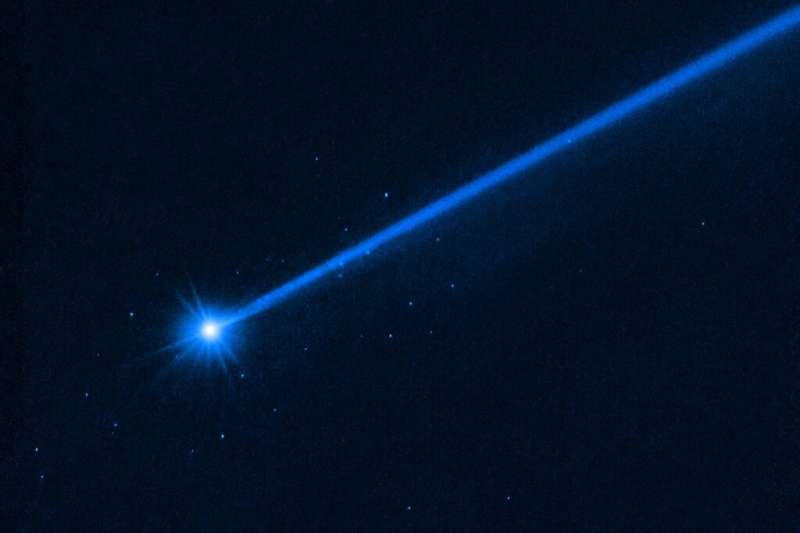
Images captured by the Hubble telescope show that when a NASA spacecraft successfully diverted an asteroid from its original course last year, it resulted in numerous boulders being propelled into space. This unprecedented test of Earth’s planetary defenses was carried out by the DART probe, which collided with the pyramid-shaped asteroid Dimorphos approximately 11 million kilometers away from Earth in September 2022.
The impact caused the asteroid to veer significantly off course. The latest Hubble Space Telescope images reveal that the collision propelled 37 boulders, ranging in size from one meter to seven meters across, into the cosmos. According to scientists, these boulders represent around two percent of the pre-existing rocks scattered across the surface of the loosely-held-together asteroid.
This discovery suggests that future missions to divert potentially life-threatening asteroids heading towards Earth could also result in the ejection of boulders towards our planet. However, the current boulders pose no threat to Earth, as their movement is minimal. They are drifting away from Dimorphos at a speed of approximately one kilometer per hour, equivalent to the pace of a giant tortoise. The European Space Agency’s Hera mission, scheduled to arrive at the asteroid in late 2026 to assess the damage, will have the opportunity to study these slow-moving boulders.
Lead author David Jewitt, a planetary scientist at the University of California at Los Angeles, described the dispersing boulder cloud as “a very slowly expanding swarm of bees.” The Hubble telescope’s “spectacular observation” provides valuable insights into the effects of asteroid impacts and the resulting material ejection. Jewitt also emphasized that these boulders are among the faintest objects ever imaged within our solar system.
Jewitt estimates that the impact of DART created a crater approximately 50 meters wide on Dimorphos, which itself has a diameter of 170 meters. The scientists intend to continue tracking the trajectory of the boulders in order to determine the manner in which they were launched off the asteroid’s surface.
The research findings were published in the Astrophysical Journal Letters.
More information:
David Jewitt et al, The Dimorphos Boulder Swarm, The Astrophysical Journal Letters (2023). DOI: 10.3847/2041-8213/ace1ec
© 2023 AFP
Citation:
Asteroid-smashing NASA probe sent boulders into space (2023, July 23)
retrieved 23 July 2023
from https://phys.org/news/2023-07-asteroid-smashing-nasa-probe-boulders-space.html
This document is subject to copyright. Apart from any fair dealing for the purpose of private study or research, no
part may be reproduced without the written permission. The content is provided for information purposes only.



